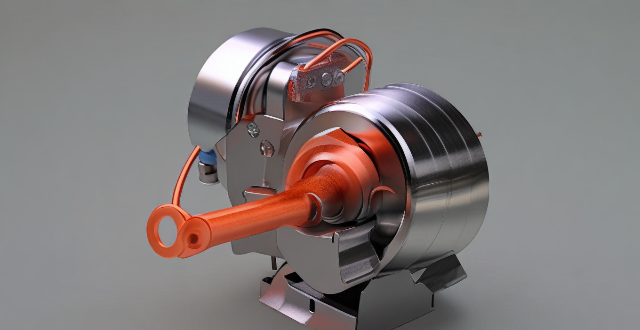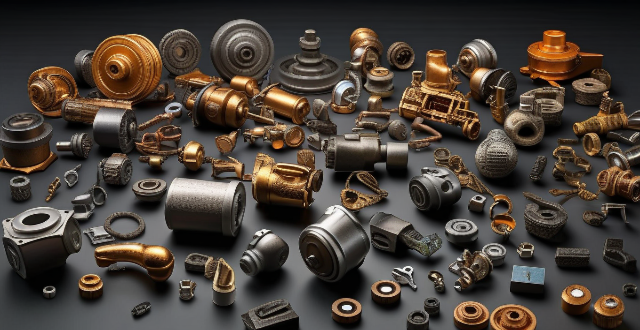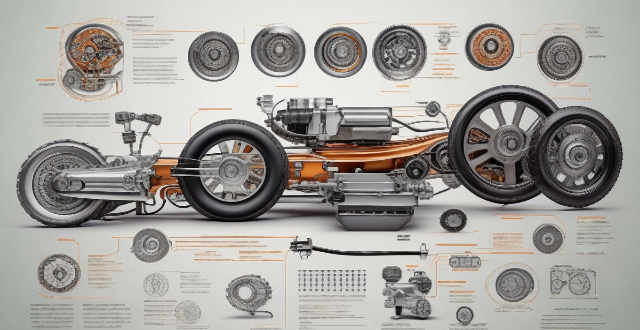Motor Induction

How does the design of a permanent magnet motor differ from an induction motor ?
The article discusses the differences between permanent magnet motor and induction motor design, focusing on three main aspects: rotor design, stator winding design, and cooling system. The rotor of a permanent magnet motor contains high-energy rare-earth magnets that interact with the stator windings to produce torque, while the rotor of an induction motor has aluminum or copper bars that induce currents when exposed to a rotating magnetic field produced by the stator windings. The stator winding design also varies between the two types of motors, with permanent magnet motors typically having a three-phase distributed winding and induction motors having either a distributed or concentrated winding. Finally, the cooling system design differs as well, with permanent magnet motors often relying on natural convection or forced air cooling, while induction motors may use external fans or blowers for more effective heat removal. Understanding these differences is crucial for engineers to choose the appropriate motor type for their needs and optimize its performance accordingly.

What is the typical cost difference between a permanent magnet motor and an equivalent size induction motor ?
Permanent magnet motors (PMMs) and induction motors (IMs) are two common types of electric motors used in various applications. The cost difference between them is often a significant factor in deciding which one to use. PMMs are known for their high efficiency, compact size, and low noise levels, while IMs are simpler and more robust. The cost difference depends on factors such as size, power rating, materials used, and manufacturing processes. Generally, PMMs are more expensive than IMs of equivalent size due to material costs, manufacturing processes, efficiency and performance requirements, and market demand and availability. When choosing between these two types of motors, it is essential to consider both the technical requirements and budget constraints of your specific application.

Are permanent magnet motors more susceptible to damage from high temperatures compared to other motor types ?
Permanent magnet motors are more susceptible to high temperatures due to demagnetization and thermal expansion issues, compared to induction motors and switched reluctance motors which primarily face insulation degradation and material fatigue respectively.

How does a combination motor drive work ?
Combination motor drives integrate VFD and servo controller functionalities to achieve precise speed and torque control for AC induction and permanent magnet synchronous motors. They enhance performance, reduce energy consumption, and extend motor lifespan by offering smooth speed control and reducing wear and tear. Key components include a VFD, servo controller, electric motor, encoder, and user interface. The system uses feedback from an encoder to adjust the motor's input signals, ensuring accurate motion profiles.

What is a drive motor and how does it work ?
A drive motor, also known as a motor or electric motor, is a device that converts electrical energy into mechanical energy. It operates on the principle of electromagnetism, using magnetic fields to produce motion. Drive motors are used in various applications such as transportation, industrial machinery, and consumer electronics. The working principle of a drive motor is based on **electromagnetic induction**, which refers to the process of generating an electric current within a conductor when it is exposed to a changing magnetic field. In a typical AC (Alternating Current) motor, a rotating magnetic field is created inside the motor using multiple coils of wire connected to an alternating current source. The alternating current causes the direction of the magnetic field produced by each coil to change continuously. As these fields change, they create a rotational force called **torque**, which turns the motor shaft. The interaction between the rotating magnetic field and the stationary part of the motor generates motion. This movement can be harnessed to perform work, such as driving a fan blade or lifting weights. The components of a drive motor include the stator, rotor, bearings, windings, commutator (in DC motors), and shaft. There are several types of drive motors, including DC Motors, AC Motors, Stepper Motors, and Servo Motors. Each type has its advantages and disadvantages, making it suitable for specific applications based on factors like efficiency, size, cost, and control complexity.

Can a single motor drive be used for heavy-duty tasks ?
A single motor drive can indeed be used for heavy-duty tasks, but it depends on several factors such as the type of motor, its power rating, and the nature of the task. There are various types of motors available, each with its own set of advantages and disadvantages. The power rating of a motor is an important factor to consider when determining whether it can handle heavy-duty tasks. The nature of the task is another critical factor to consider. By carefully considering these factors and choosing the right motor for the job, you can ensure that your system is reliable, efficient, and effective.

Can you explain the concept of vector control in multi-motor drives ?
Vector control is a method for controlling the speed and torque of electric motors, especially AC motors, in multi-motor drives. It works by decoupling the flux-producing and torque-producing components of the stator current, allowing for independent control of both. This results in improved dynamic response, precise speed regulation, energy efficiency, reduced mechanical stress, and adaptability to different motor types.

What are the advantages and disadvantages of multi-motor drives in electric vehicles ?
Multi-motor drives in electric vehicles provide enhanced performance, efficiency, redundancy, and design flexibility. However, they also come with increased complexity, cost, battery drain, weight, space constraints, and control challenges. The decision to use a multi-motor system should consider these factors based on the vehicle's goals and requirements.

How does an electromagnetic motor work ?
The article provides a comprehensive overview of how an electromagnetic motor works, including its basic components such as the stator, rotor, bearings, commutator (in DC motors), and armature (in AC motors). It explains the operating principles in four steps: applying electrical energy to create a magnetic field around the stator coils, the interaction between the magnetic fields of the stator and rotor causing the Lorentz force, the rotation of the rotor as it tries to align its magnetic poles with those of the stator, and maintaining consistent rotation through current reversal by the commutator in DC motors or changing polarity in AC motors. The article also discusses different types of electromagnetic motors like DC motors, AC motors, stepper motors, synchronous motors, and induction motors, highlighting their unique characteristics and suitability for various applications based on efficiency, power requirements, and control complexity.

Are hub motors more expensive than other types of motors ?
Hub motors are generally more expensive than other types of motors, such as brushed DC motors and induction motors. However, they offer several advantages over these motor types, including their compact size, high efficiency, and low maintenance requirements. Brushless DC motors are generally less expensive than hub motors but still offer many of the same benefits. The choice between these motor types will depend on the specific needs and budget of the vehicle manufacturer or end-user.

How do you choose the right electromagnetic motor for your needs ?
Choosing the right electromagnetic motor can be a daunting task, but by following these steps, you can make an informed decision that meets your specific needs. First, determine your application, including factors such as load type, required speed, torque, and power output. Then consider the type of motor, such as AC induction, DC, stepper, or servo, each with its own advantages and disadvantages. Next, determine performance requirements, such as speed range, torque requirements, power output, efficiency, and duty cycle. Consider physical constraints, such as size, weight, mounting configuration, environmental conditions, and connectivity options. Finally, evaluate cost and availability, including initial purchase price, maintenance and repair costs, lead times for delivery, and availability of replacement parts and accessories. By following these steps and considering all relevant factors, you can choose the right electromagnetic motor for your specific needs.

How does a single motor drive work ?
The motor drive converts incoming AC power to DC, controls the motor's speed via PWM, regulates its torque by monitoring current and adjusting voltage, and ensures proper operation through feedback control.

What is the difference between single motor and multi-motor drives ?
Single motor drives control only one motor and are simple, cost-effective, and easy to maintain. Multi-motor drives control multiple motors simultaneously and offer increased flexibility, improved performance, and enhanced functionality but are more complex and expensive. The choice between these two types of drives depends on the specific requirements of the application.

What is a hub motor ?
A hub motor is an electric motor integrated into a vehicle's wheel hub, offering direct drive, simplified design, quiet operation, and space efficiency. However, it has limitations such as limited power output, overheating concerns, and cost considerations. Hub motors are commonly used in electric vehicles like bicycles, scooters, motorcycles, and cars.

How does a hub motor work ?
Hub motors, integral to electric vehicles, operate on electromagnetic principles and Lorentz force. Key components include the stator, rotor, bearings, and controller. When current flows through the stator coils, a magnetic field is generated, which interacts with the rotor's permanent magnets, causing rotation that propels the vehicle. Hub motors are efficient, quiet, and require less maintenance due to their direct drive mechanism and fewer moving parts. However, they can add weight and present cooling challenges. Advancements in technology are expected to enhance their benefits and address limitations.

How do you choose the right AC stepping motor for your project ?
Choosing the right AC stepping motor requires understanding project needs, selecting the appropriate motor type, ensuring compatibility with control systems, considering physical constraints, evaluating performance characteristics, accounting for environmental factors, managing budgetary considerations, relying on supplier support and reputation, and conducting thorough testing.

Can you provide some examples of applications where multi-motor drives are used ?
Multi-motor drives are used in various applications where multiple motors need to be controlled simultaneously, including industrial automation, CNC machines, electric vehicles, wind turbines, robotics, and aerospace.

Can a combination motor drive improve energy efficiency in my facility ?
Combination motor drives can improve energy efficiency in facilities by optimizing electric motor performance, reducing energy consumption, and extending equipment lifespan. They offer variable speed control, soft start/stop capabilities, and reactive power compensation features that contribute to lower energy bills, reduced maintenance costs, and environmental benefits like reduced greenhouse gas emissions.

How does a single motor drive compare to a dual motor drive ?
This article compares single motor drives and dual motor drives based on their performance, efficiency, cost, and applications. Single motor drives can only control one motor at a time, while dual motor drives can control two motors simultaneously. Dual motor drives offer higher overall torque and better synchronization between multiple motors, but they also consume more power and require more maintenance. Single motor drives are typically less expensive and well-suited for low power applications with simple movement profiles, while dual motor drives are appropriate for high power applications with complex movement profiles requiring precise synchronization. The choice between a single motor drive and a dual motor drive depends on the specific requirements of the application.

How does a multi-motor drive system work ?
The text explains how a multi-motor drive system works, its components, and benefits. It describes the process of power conversion, control signals, motor operation, mechanical transmission, and feedback adjustment in such systems. The advantages include improved efficiency, increased redundancy, and enhanced control.

What are the advantages and disadvantages of using a combination motor drive compared to a single motor drive ?
The combination motor drive has several advantages over a single motor drive, including improved performance, enhanced reliability, flexibility in design, energy efficiency, and modularity and scalability. However, it also has disadvantages such as complexity, cost, space requirements, synchronization issues, and integration challenges.

What is an internal rotor motor ?
The text discusses the design, advantages, disadvantages, and applications of internal rotor motors. Internal rotor motors are a type of electric motor where the moving part (rotor) is inside the stationary part (stator). They offer benefits such as high efficiency, good heat dissipation, simplicity in construction, and low inertia. However, they also have limitations like limited torque density, difficulty in cooling, and potential for magnetic saturation. These motors are commonly used in automotive, aerospace, industrial equipment, and consumer electronics applications.

How do you maintain and troubleshoot a DC brushed motor ?
Maintaining and Troubleshooting a DC Brushed Motor involves regular cleaning, lubrication, brush replacement, heat management, and monitoring voltage and current. Troubleshooting steps include checking for no power, reduced performance, excessive heat, vibration or noise, sparking, intermittent operation, and smoke or burning smell. Proper maintenance and troubleshooting can prolong the lifespan and ensure reliable operation of the motor.

How does a multi-motor drive system contribute to energy savings in industrial processes ?
A multi-motor drive system contributes to energy savings in industrial processes by optimizing the operation of multiple motors. It balances loads, controls speed optimally, provides reactive power compensation, enables regenerative braking, and reduces maintenance costs. This technology helps businesses improve their bottom line while reducing their environmental footprint.

What are the benefits of using a combination motor drive system ?
Combination motor drive systems offer benefits such as improved efficiency, increased reliability, flexibility, and enhanced control. These systems combine the advantages of different types of motors to create a more efficient and reliable drive system. They are ideal for a wide range of applications and can help businesses save money on energy costs while reducing downtime and maintenance requirements.

How do I choose the right drive motor for my application ?
When selecting a drive motor for your application, considerWhen selecting a drive motor for your application, considerrque and speed, power duty cycle, cost, size, control compatibility, safety compliance, maintenance, and manufacturer reputation. This comprehensive guide helps ensure you choose a motor that meets your needs effectively and efficiently.

What are the advantages of using a brushless motor ?
Brushless motors offer several advantages over traditional brushed motors, including higher efficiency, longer lifespan, improved performance, quieter operation, enhanced reliability, and environmental benefits. These benefits make them an attractive choice for a wide range of applications.

How does a brushless motor work ?
Brushless motors, also known as BLDC motors, are electric motors that use an electronic controller to switch the current in their stator windings. They consist of three main components: the rotor, stator, and electronic controller. The working principle of a brushless motor involves initial rotation, commutation, and maintaining rotation. Brushless motors offer several advantages over traditional brushed motors, including higher efficiency, longer lifespan, better performance, and lower maintenance.

Is it possible to convert an internal rotor motor into an external rotor one, and vice versa ?
Converting an internal rotor motor into an external rotor one and vice versa is possible but not straightforward. It requires significant modifications to the motor's design and components, which can be costly and time-consuming. Moreover, the performance of the converted motor may not meet the original specifications or expectations. Therefore, it is essential to carefully evaluate the benefits and drawbacks of such a conversion before proceeding.

How does a DC brushed motor compare to a DC brushless motor in terms of efficiency and performance ?
The text provides a comparison between DC Brushed Motor and DC Brushless Motor in terms of efficiency, performance, and lifespan. DC brushed motors have lower efficiency due to energy loss caused by friction between the brushes and the commutator, while DC brushless motors are more efficient as there are no brushes to cause friction. In terms of performance, DC brushed motors are limited due to physical limitations of the brushes and commutator, while DC brushless motors offer improved performance with higher RPM and power output. Overall, a DC brushless motor is generally superior to a DC brushed motor in terms of efficiency, performance, and lifespan.